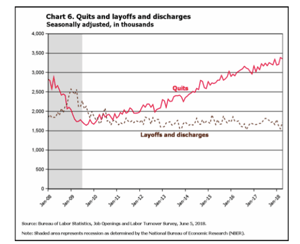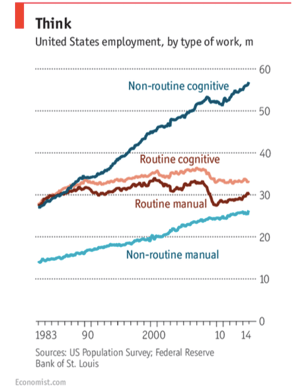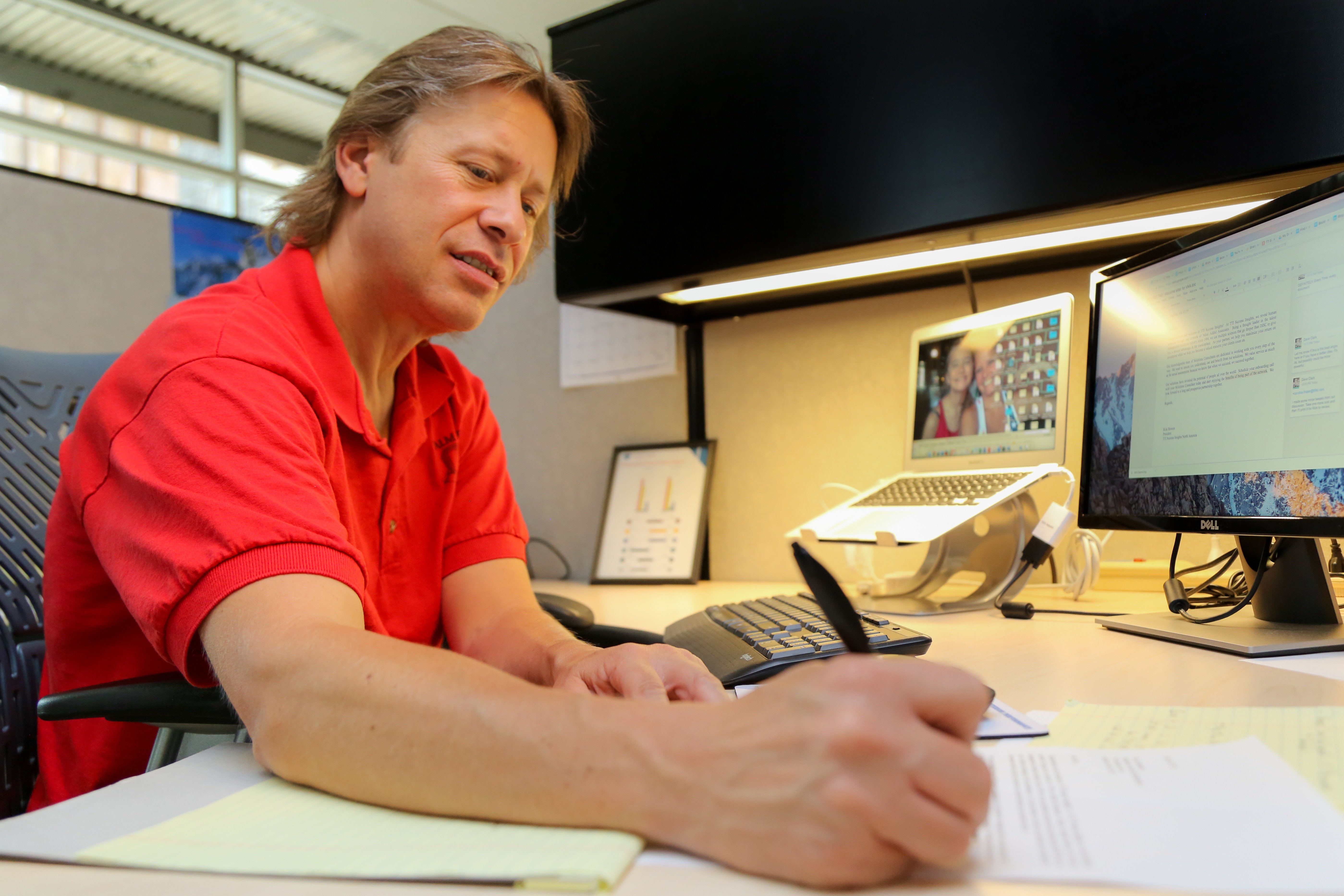
The employment landscape has changed significantly over the past few years. Gone are the days of employers having hundreds of candidates to choose from with employees scrambling to land any job they could get. Today, the employees have the upper hand. This shift took place the moment that job openings surpassed hires. That trend continues to rise so it appears that it will continue to be an employee’s market for the foreseeable future.
For an organization to grow in this environment, it will take a more concerted effort of attracting and retaining great employees. Companies will need to take a much more proactive approach in seeking out great talent. In a sense, it’s a role reversal with the company now needing to sell itself to the candidate.
The candidate-driven market
Recruiters and employers alike agree that it’s an employee-driven market today. 86% of recruiters feel this way compared with 62% of employers who agree. A likely reason for the difference between the two numbers is that recruiters are often the first to feel the intensity and pressure of what’s happening in the market. Employers aren’t on the front lines so they don’t feel a market shift as quickly. Based on low unemployment, and the supply/demand imbalance that exists clearly indicates the candidates are in control of the market right now.
For general employment, it can regularly take between 45-75 days, on average, to find the right person for the right job. Hiring for specialty positions can take significantly longer, sometimes many months. Most high-performing workers are currently employed, though they realize they have choices.
 According to the Bureau of Labor Statistics, Three million Americans quit their jobs every month, an eye-opening number. They have become more choosy about where they work. If the goals of the company and employee don’t align, employees are much more willing to take a chance and move on to a new opportunity. Those with top-level skills can effectively choose their preferred place of employment.
According to the Bureau of Labor Statistics, Three million Americans quit their jobs every month, an eye-opening number. They have become more choosy about where they work. If the goals of the company and employee don’t align, employees are much more willing to take a chance and move on to a new opportunity. Those with top-level skills can effectively choose their preferred place of employment.
The interview process has taken on a metamorphosis. Interview questions used to focus mostly around job duties and past experience. Today, the candidates are asking a lot of the questions, such as “what’s the company culture like,” “how do the employees interact with each other,” and “is employee engagement at a high level?” If your company is known as a great place to work, word spreads. The opposite is also true.
The cost of finding a new employee
Not only is hiring a high-performing candidate important, it is equally important to ensure the right people are in the right positions. The economy is doing well and organizations are firing on all cylinders. They simply don’t have the time to deal with the repercussions of making a bad hire. Putting a person in the wrong position can really slow down productivity. Often it’s better to leave a position open in the short term rather than fill it with the wrong person which can, potentially, do more long-term damage.
A study conducted by the Society for Human Resource Management revealed that employers need to spend the equivalent of six to nine months of an employee’s salary in order to find and train their replacement. Hiring mistakes are costly. A good mindset for hiring managers is to treat every employee as a million dollar hire. One bad apple has the potential to spoil the entire organization.
A new employee can take up to two full years to reach the same level of productivity as an existing staff member, according to business expert Josh Bersin of Bersin by Deloitte. A new hire will need to acclimate and be trained, likely taking productive work time away from co-workers.
The Harvard Business Review points out that as much as 80% of employee turnover is due to bad hiring decisions. While organizations may be anxious to fill positions, a more prudent approach is to put a little extra time and effort into hiring to ensure getting it right the first time.
Organizations need to actively promote why they are a great place to work. Workers know what they want these days. Organizations need to promote they have a positive company culture, a high level of employee engagement and a great overall employee experience. While hiring used to be a somewhat passive activity, top organizations now need to take a proactive approach to seek out the top talent.
Type of Workers
 Every city has certain job skills that have a shortage of qualified candidates while other jobs have an overabundance of workers. In Phoenix, Arizona, the jobs with a surplus of workers include: Manufacturing operations, management accounting, procurement, negotiation and real estate. The top 5 skills shortages in Phoenix are: oral communication, people management, time management, business management and public policy (with social media a close 6th).
Every city has certain job skills that have a shortage of qualified candidates while other jobs have an overabundance of workers. In Phoenix, Arizona, the jobs with a surplus of workers include: Manufacturing operations, management accounting, procurement, negotiation and real estate. The top 5 skills shortages in Phoenix are: oral communication, people management, time management, business management and public policy (with social media a close 6th).
When you look at the top 3 skills needed in Phoenix, these are skills not often taught. As technology continues to innovate, some of the voids needed to move business forward are often taken for granted, such as human communication. Face-to-face conversations still have a lot of value in today’s world.
It used to be simply about a person’s hard skills; whether or not they are good at doing job X. Today, we are delving deeper to look at things such as soft skills. Is this candidate good with people? How do they communicate? What is their level of emotional intelligence?
With all the talk about machines taking away human jobs, the stats show that there will be a need for human workers for the foreseeable future. Especially in the area of non-routine cognitive jobs, which are least likely to be replaced by technology, since there is no “routine” or predictability to these jobs. A high level of cognitive ability will continue to be in demand, regardless of how much technology increases in the workplace.
An interesting observation is the reemergence of a people-first approach in corporate marketing. With the start of tax preparation season comes the endless onslaught of tax prep commercials. You are beginning to see corporate entities advertising that, even if you plan to file online, they will have real live CPAs available for questions who are just a click away. This shift proves that we still prefer, if not require, real people to do important jobs.
Engagement
Employee engagement has been all over the news lately. Even though engagement is on the upswing, the majority of workers (53% of them) remain disengaged according to a recent study by Gallup. This 53% are effectively just collecting a paycheck and doing what they need to get by.
The question an organization needs to ask is...what’s missing? What can we do to tap into to true talent and abilities of that 53%? Imagine the possibilities if organizations started to get high-level production from workers that are just working to get by. Putting more focus and attention on soft skills may be the answer to moving some of those disengaged workers to the engaged side.
What companies can do to attract the top talent
Brian Mohr is the president of Conscious Capitalism, Arizona Chapter and one of the original co-founders of Jobing.com. He believes the single best thing a company can do to retain its talent is to “be who you say you are.” Authenticity counts. “Don’t try to pretend you’re someone you’re not. Be consistent with your purpose or mission. In today’s employment landscape, you cannot play the do as I say, not as I do game,” says Mohr.
The days of lifetime employment are all but gone. Investing in people and helping them grow should be a primary focus of an organization. If you train them well and they stay, you have a top-flight worker. If they leave and shine elsewhere, their skill set will represent the quality of your brand in the marketplace.
Role clarity is highly important. Employees want to know exactly on what they are being judged. Giving them clear marching orders and the authority to execute their job duties creates employee loyalty.
Conclusion
Word travels fast in terms of whether or not a company is a good place to work. Those with a good reputation attract top talent consistently. Herb Kelleher, founder of Southwest Airlines, was a perfect example. His philosophy was simple: take great care of employees and everything else will take care of itself. Decades later, Southwest is still recognized as a people-first company with a great culture, even now that the company’s patriarch is no longer with us.
What a novel idea - putting people first. Sometimes the simplest ideas are the best. Companies that put people first will have a staff of employees that say “I love my job and I’m excited to do what I do.”
The information contained in this blog is derived from a recent webinar conducted by Brian Mohr and TTI Success Insights President, Rick Bowers. To listen to the 30-minute webinar, click the button.




